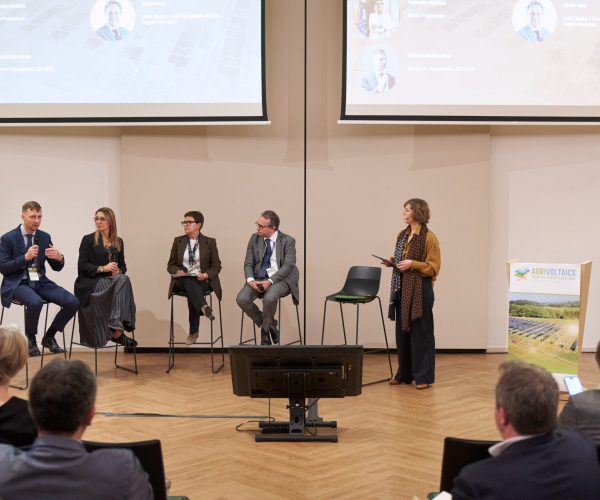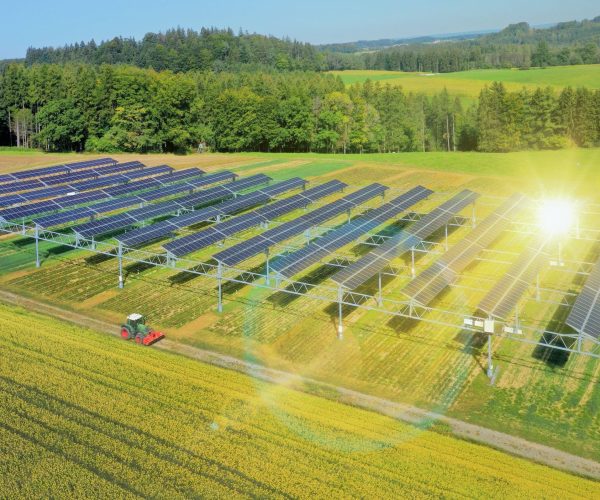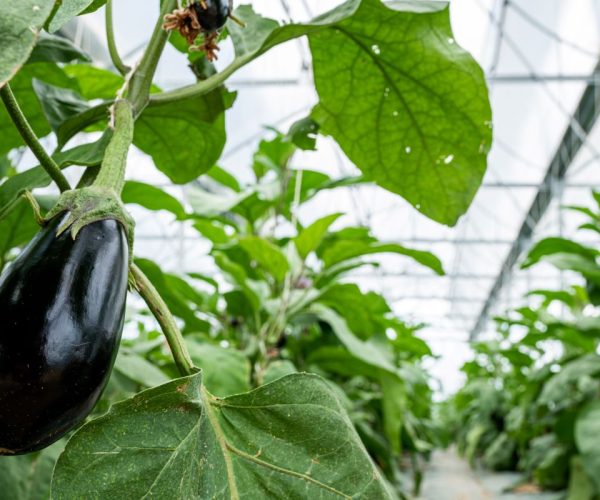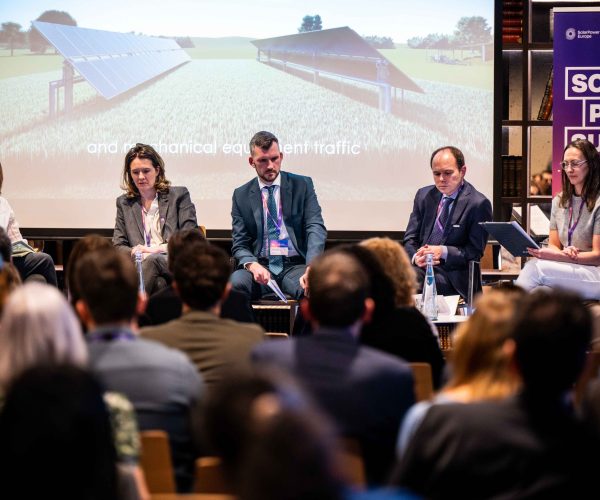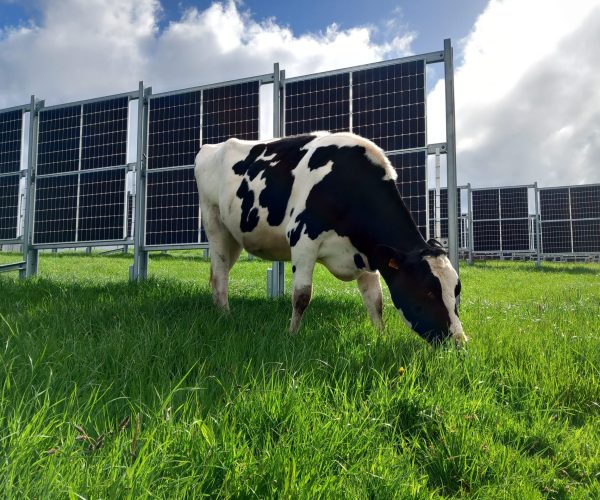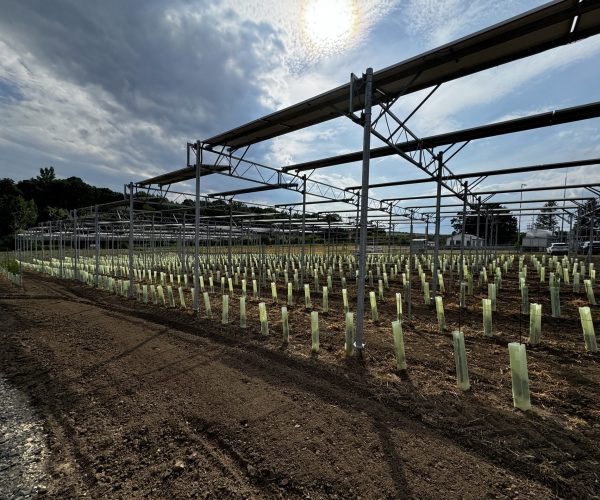Agrisolar showing the path forward in Milan
At the AgriVoltaics Industry Forum Europe 2025 in Milan, SolarPower Europe along with Conexio-PSE brought together leading voices from across the agriculture, energy and policy sectors to explore how agrisolar can be a true pioneer for Europe’s sustainable future.
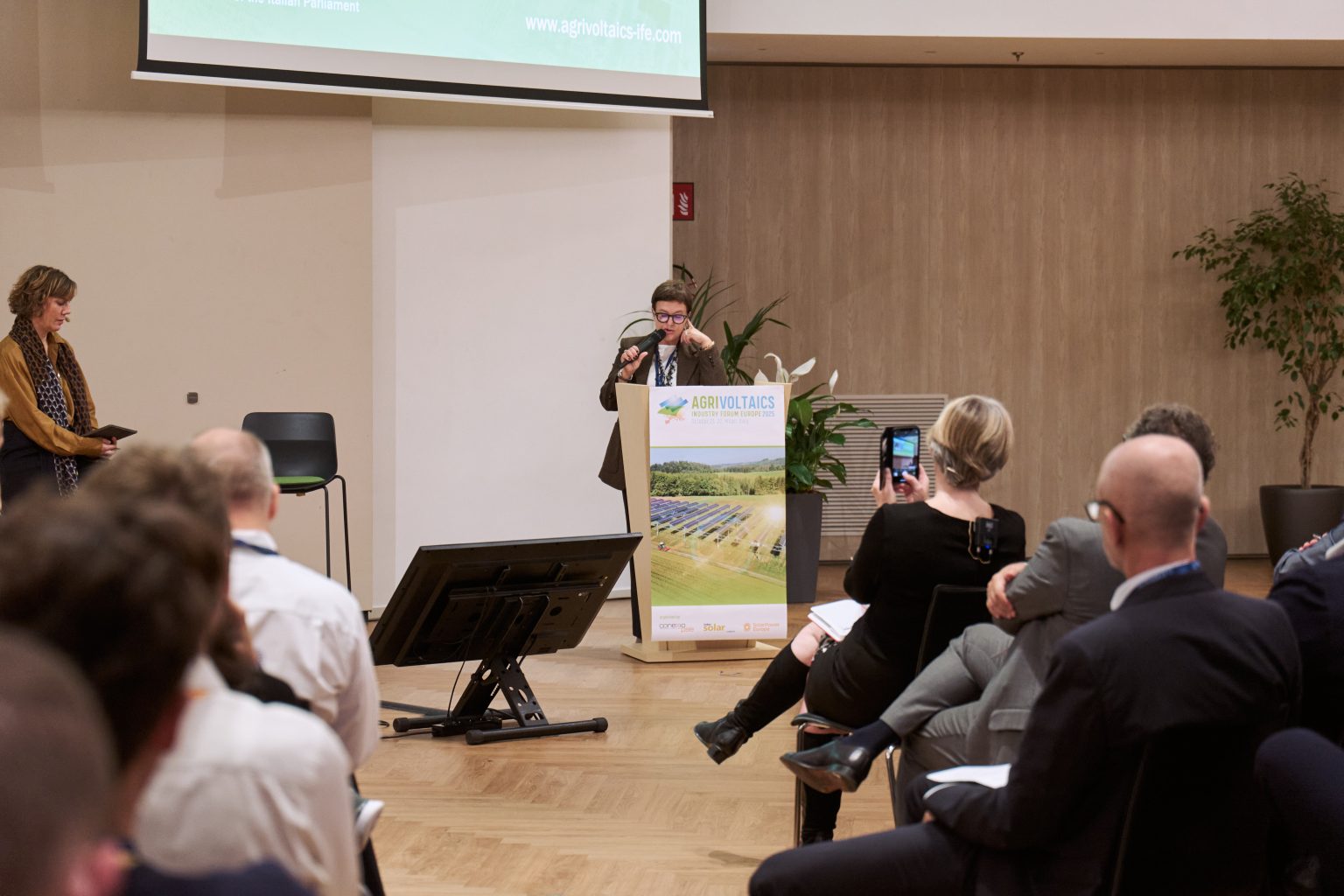
Photo: © SolarPower Europe
The first day opened with a powerful session on ‘Agrivoltaics as Trailblazer: The Solution for Battling Climate Change, Food Scarcity, and Water Issues.’ Moderated by SolarPower Europe CEO, Walburga Hemetsberger, and Tina Barroso, Event Organiser from Conexio-PSE, we reflected on Europe’s progress and the remaining challenges in scaling agrisolar responsibly.
At the event in Milan, SolarPower Europe launched its ‘Agrisolar Policy Map’, a comprehensive policy tool designed to benchmark agrisolar regulations across 18 EU Member States. The Map highlights best practices and regulatory gaps, aiming to accelerate the deployment of agrisolar solutions that support both energy and agricultural resilience. It can be downloaded here.
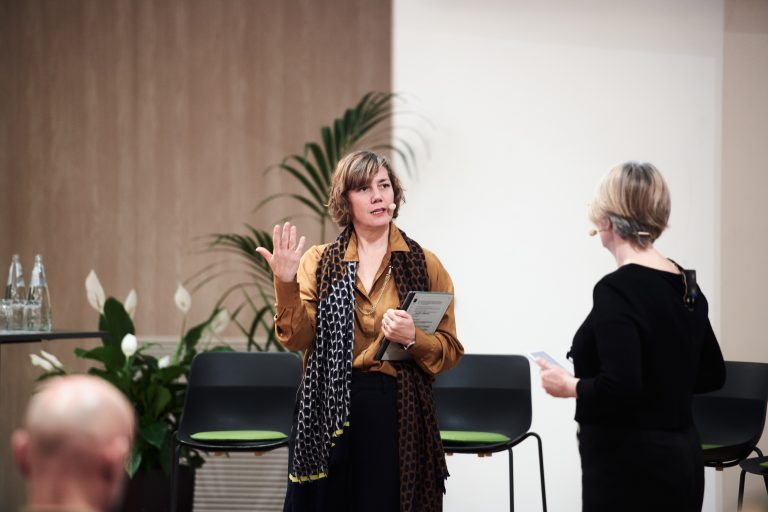
Photo: © SolarPower Europe
Parliament Perspective
In the opening keynote speech, Antonella Forattini, Member of the Italian Parliament, highlighted the massive potential of agrisolar in Italy, estimated at around 30 GW. She emphasised that renewable energy should not be seen as a competitor to agriculture, but rather as a solution to strengthen the farming sector.
She concluded that Agri-PV can become a true pillar of Italy’s sustainability strategy. With a strong focus on research and territorial equity, agrisolar can benefit rural areas, and improve soil and water management practices. “Agrisolar is not a vision,” she stated, “it is a strategy for rural areas and a key player in delivering the European Green Deal.”
National and Agricultural Sector Views
On the national side, Alessandra Scognamiglio, President of the Associazione Italiana Agrivoltaico Sostenibile (AIAS), noted that in Italy, agrisolar is still perceived with a degree of ambiguity. Clear and consistent rules are needed to move forward. Key issues remaining include the definition of suitable areas, as some regions currently restrict the development of both solar PV and Agri-PV projects, and clarity around Common Agricultural Policy (CAP) requirements. Scognamiglio also stressed the need for greater flexibility regarding the use of farmland for agrisolar purposes.
Similarly, Emilio Sani, Advisor at Italia Solare, emphasised the importance of creating a strong link between farmers and the energy sector. He called for the development of best practices that ensure agrisolar projects deliver real value to rural communities, rather than focusing solely on financial gains. “We need clear rules and meaningful stakeholder engagement,” he said, “to ensure Agri-PV becomes a driver of sustainable growth, not speculation.”
The European Commission’s Viewpoint
Representing the European Commission’s Directorate-General for Agriculture and Rural Development (DG AGRI), Policy Coordinator Antanas Karbauskas emphasised that “agrisolar is one of the key elements that can contribute to greater flexibility in Europe’s energy and agricultural systems.” He acknowledged that many Member States are still in the process of understanding the full potential of agrisolar, learning what it is, how it operates, and how it can fit within national frameworks for renewable energy and agriculture.
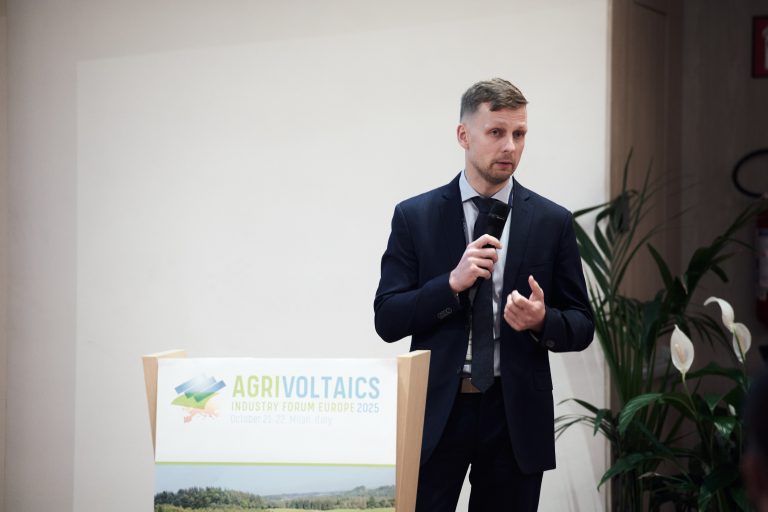
Photo: © SolarPower Europe
He also commended SolarPower Europe’s active role in advancing the agrisolar agenda across the continent, stating that the association succeeds in engaging with member states to promote better understanding, clearer definitions and stronger coordination overall.
Photo: © SolarPower Europe
Continuing the Agrisolar Discussion
In a panel led by SolarPower Europe’s Policy Advisor for Sustainability, Lina Dubina, attendees dove into the crucial financial and regulatory dimensions of agrisolar. This included an interactive deep-dive on regulations across European Member States, spotlighting country-specific approaches from Austria, Czechia, France, Italy and a global perspective. This ended with a panel discussion from a representative from each country to conclude what was shared. It was clear that agrisolar projects and regulations vary across different Member States but the growing potential is evident as a method of using food and energy together to build resilience and security for Europe as a whole.
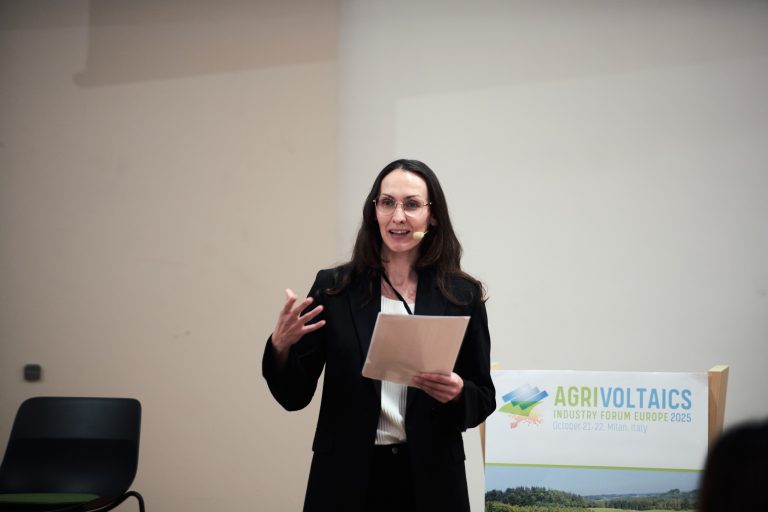
Photo: © SolarPower Europe
A Shared Path Forward
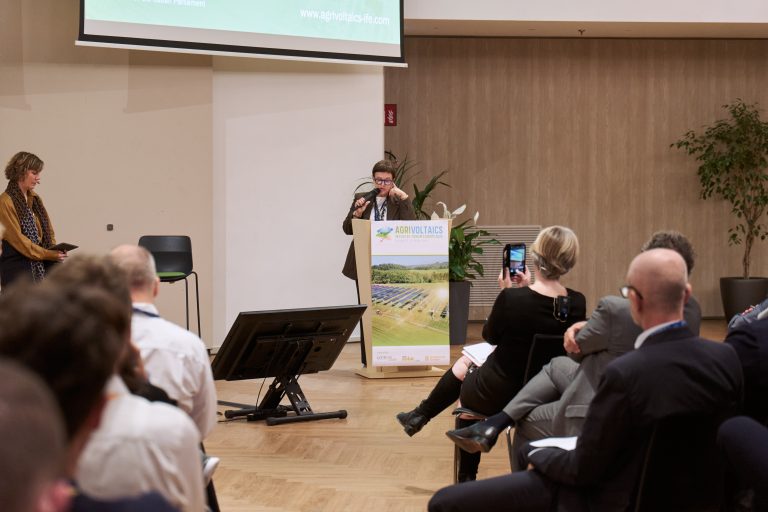
Photo: © SolarPower Europe
Day 2 reinforced that agrisolar is as much about collaboration and co-design as it is about technology. From smarter business models and flexible grid solutions, to empowering farmers and protecting rural landscapes, the conference showcased how Europe’s agrisolar community is moving from ideas to implementation building not only projects but partnerships for a sustainable, resilient future.
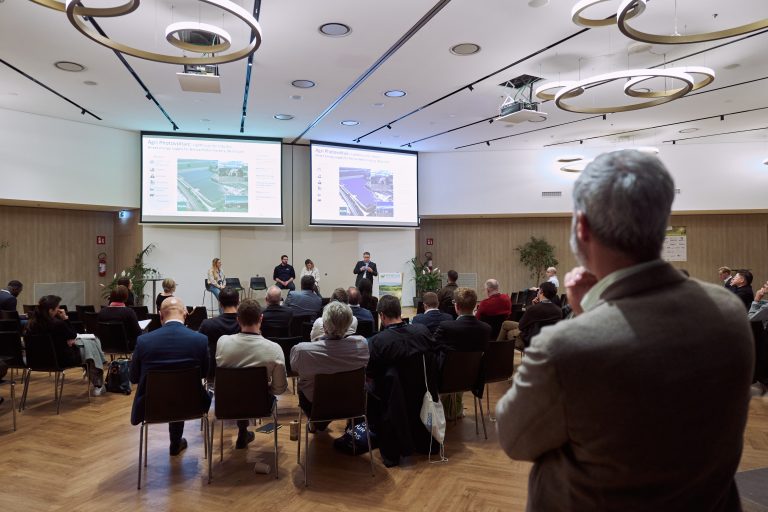
Photo: © SolarPower Europe
Thank you to the moderators, speakers, sponsors, and participants for making this AgriVoltaics Conference 2025 a success. Together, we’re advancing Europe’s clean energy transition, one field at a time.
Explore 200+ projects on the agrisolar digital map
these might be interesting to you as well
